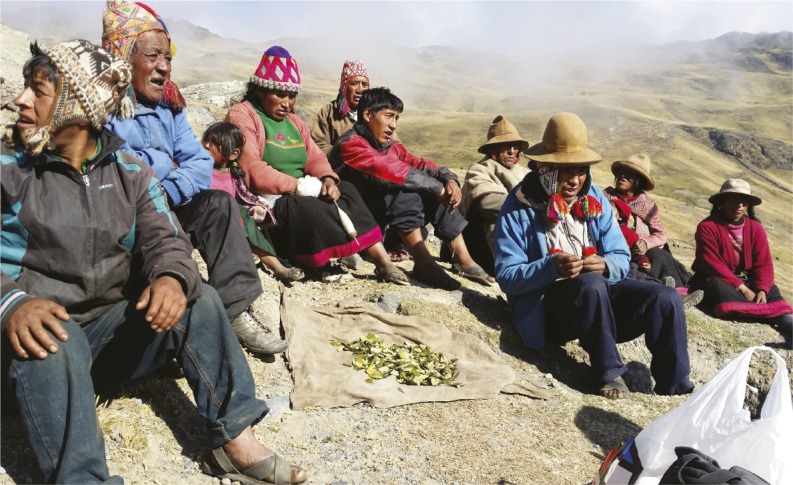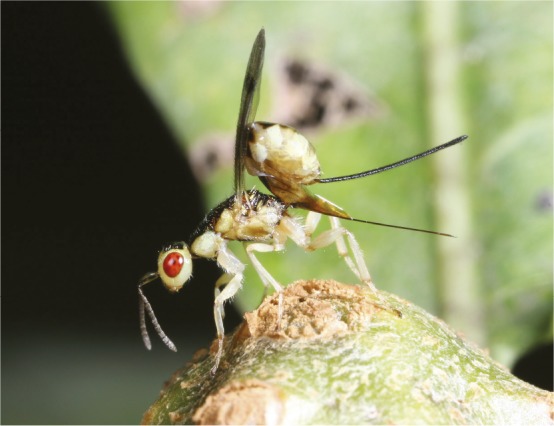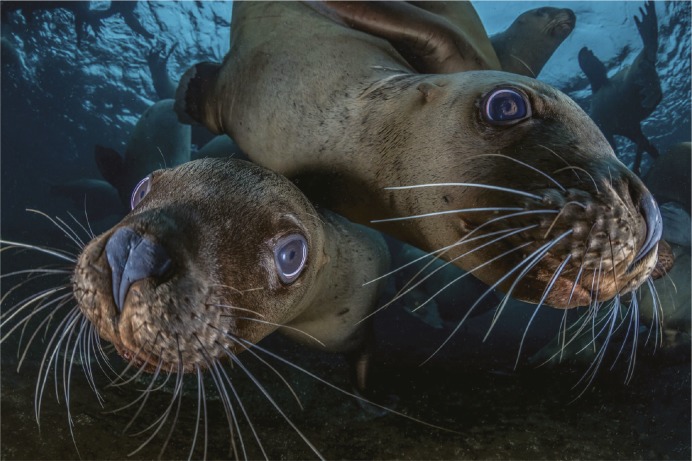Piano training might improve language skills
Piano training is tied to improved linguistic skills. Image courtesy of iStock/ClarkandCompany.
Music training has been tied to improved linguistic ability in children and adolescents, but the underlying mechanisms remain unclear. To probe the link, Yun Nan et al. (pp. E6630–E6639) recruited 74 cognitively comparable Mandarin-speaking children, ages 4 to 5 years, with no previous music training from a kindergarten in Beijing, China. The authors assigned the children to three groups: one that received thrice-weekly 45-minute piano lessons for 6 months; one that received training in reading for the same time period; and a control group that received no training. One month after training, children who received piano training performed significantly better than the other two groups on a Mandarin word-discrimination task that was based on consonant sounds; in contrast, both piano and reading training appeared to confer similar improvements in vowel-based word discrimination compared to the control group. Improvements in word discrimination tied to piano training were mirrored by enhanced neural responses to changes in musical pitch and lexical tone, suggesting general improvements in sound processing ability. However, tests of IQ, attention, and working memory failed to reveal any broad enhancements in cognitive functions specifically tied to piano training. Thus, early music training might prove salutary to the development of brain regions implicated in processing pitch—a sound element common to music and language, according to the authors. — P.N.
Antibiotic shows potential for treating inherited skin disorder
Herlitz junctional epidermolysis bullosa (H-JEB) is an inherited and potentially fatal skin disease that is currently treated only with palliative care. The disease is caused by mutations in the LAMA3, LAMB3, or LAMC2 genes, leading to complete loss of the structural protein laminin 332, which mediates adherence between the dermal and epidermal layers of the skin. Vadim Lincoln et al. (pp. E6536–E6545) report that gentamicin, a common antibiotic, might help treat most H-JEB patients, who harbor LAMB3 nonsense mutations. The mutations generate premature termination codons (PTCs) in messenger RNA, resulting in the synthesis of either no laminin β3 protein or a truncated protein incapable of forming functional laminin 332. Gentamicin treatment of skin cells harboring different LAMB3 nonsense mutations promoted a process that interferes with the ability of the translational machinery to recognize PTCs. As a result, the cells produced full-length laminin β3 for up to 6 weeks after initial treatment. Moreover, gentamicin-induced laminin β3 contributed to the assembly of laminin 332 by associating with laminin α3 and laminin γ2—proteins encoded by LAMA3 and LAMC2, respectively. By contrast, untreated cells harboring LAMB3 nonsense mutations produced minimal laminin β3 and no detectable laminin 332. According to the authors, gentamicin may hold potential as a treatment for inherited skin disorders caused by nonsense mutations. — J.W.
Genetic history of Peruvians

Q’ueros in Chua Chua, Cusco, Peru. Image courtesy of the Instituto Nacional de Salud del Perú.
Genomic analysis of Native American populations is lacking in coverage, leading to underrepresentation of certain groups, such as Peruvians, in worldwide genomic databases. Daniel Harris et al. (pp. E6526–E6535) sequenced genomes from 280 Peruvians from three regions—the Amazon, the Andes, and the coast—as well as from Native American and mestizo populations. The authors found evidence suggesting that the Peruvian population originated around 12,000 years ago, when populations in the three regions separated and developed distinct genetic identities. Although genetic diversity was generally low in native Peruvian populations, mestizo populations showed evidence of migration down from the Andes toward the Amazon and coast, as well as admixture between regional groups even before admixture with the Spanish. The finding suggests that populations prone to migration may have been more likely to admix with Spanish colonists. Further, the low genetic diversity of Peruvian populations may confer currently undocumented predisposition to genetic diseases, although the isolation of the Native American groups suggests that each group might be predisposed to different conditions. According to the authors, admixture among mestizo populations likely began long before Spanish colonization, due to Inca Empire policies of moving people, and that determining Peruvians’ genetic ancestry may help develop personalized medicine for that population. — P.G.
Brain inflammation and malaria outcomes
Cerebral malaria is a neurological complication caused by infection with the protozoan parasite Plasmodium falciparum. The only available treatments are antimalarial drugs, which fail to prevent death or the development of residual neurological deficits in approximately one-quarter of patients. Patrick Strangward et al. (pp. 7404–7409) used RNA sequencing to analyze whole-brain transcriptional patterns across different time points in mice with experimental cerebral malaria caused by infection with Plasmodium berghei ANKA. Bioinformatics analysis revealed that expression of the gene for interleukin-33 (IL33) decreased during late stages of the disease and immediately after treatment with antimalarial drugs before returning to higher preinfection levels. Moreover, treatment with a combination of IL33—a signaling protein that regulates inflammatory responses—and antimalarial drugs at the onset of experimental cerebral malaria significantly improved neurological function and increased the survival rate from 71% to 100% 1 week after infection compared with treatment with antimalarial drugs alone. Similarly, combined treatment with antimalarial drugs and a compound that inhibits the NLRP3 inflammasome—an inflammation-inducing multiprotein complex, the formation of which is suppressed by IL33—improved neurological function and survival compared with antimalarial drug treatment alone. Taken together, the findings suggest that targeting the IL33–NLRP3 axis might reduce brain inflammation and improve the efficacy of antimalarial drug treatment for cerebral malaria, according to the authors. — J.W.
Unraveling ecological community assembly from genomic data

Female parasitoid wasp (Torymus auratus) drilling into a gall, a plant structure induced in a European oak. Image courtesy of György Csóka (National Agricultural Research and Innovation Centre, Mátrafüred, Hungary).
Ecological communities consist of multiple interacting species that share habitats. Although the trophic relationships that link interacting species are well established, how communities assemble remains poorly understood. Lynsey Bunnefeld et al. (pp. E6507–E6515) used whole-genome data from a small number of individuals per species and a likelihood-based computational approach to reconstruct a detailed assembly history for oak gall wasps and their natural parasitoid enemies. Tracing 13 community members across the Pleistocene Epoch, the authors demonstrate how comparing whole-genome–derived population histories within and between trophic levels reveals otherwise elusive details that contradict commonly applied theoretical assembly paradigms. In the case of gall wasps, the authors describe how single-species and multispecies range expansions from different directions and at varying timescales combine to form a highly complex assembly history. According to the authors, the approach can be used to efficiently reconstruct species histories and infer how ecological communities assemble through space and time. — T.J.
Dynamic ocean conditions and fisheries bycatch
Steller sea lions. Image courtesy of Steve Woods (photographer).
The incidental catch of nontarget species, or bycatch, threatens ecological and economic sustainability in marine capture fisheries. Understanding the habitat requirements of target and nontarget species as well as the location and timing of bycatch events could help support sustainable fisheries. Kylie Scales et al. (pp. 7362–7367) used mapping and modeling techniques to analyze the dynamic physical environment of the California Current System (CCS), a global marine biodiversity hotspot. The study incorporated data from 1990 to 2010 and accounted for multiple species, including fished species and protected marine megafauna, to evaluate how dynamic structures, such as mesoscale eddies and fronts, influenced fisheries bycatch in the CCS. Daily mapping of the CCS data indicated that areas associated with dynamic structures—which aggregate prey, predators, and fishers—increased the bycatch likelihood for a diverse range of species, including marine megafauna. Moreover, the analyses revealed an increased bycatch risk for protected species, including cetaceans and sea turtles. The findings suggest that real-time tracking of dynamic structures in the ocean might help reduce bycatch in fisheries, according to the authors. — C.S.




